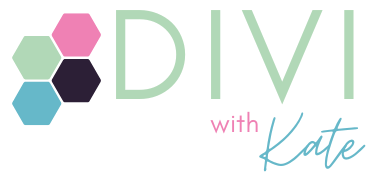Words and Meaning
Glossary
Confused by all the words?
Check out the list of definitions below.
- 404 PageAn error page shown when content isn’t found.
- AlignmentHow elements line up across the page.
- Backend BuilderThe older Divi editing interface accessed via the WordPress dashboard.
- Bounce RateThe % of visitors who leave after one page.
- BreakpointsScreen widths where your layout changes for responsiveness.
- Broken LinkA link that no longer works, usually showing a 404 error.
- Cache ClearingRemoving saved versions of your site to show updates.
- CachingSpeeds up your site by saving copies of pages.
- CategoriesBroad groupings of blog content.
- CDNA service that delivers your website content faster by using nearby servers.
- ColumnA vertical container within a row for placing modules.
- ConflictWhen plugins or settings clash and break something.
- ContainerAny box that holds content in Divi like a section, row, or module.
- ContrastThe difference between elements, used for readability and design clarity.
- Conversion RateThe % of visitors who complete a goal like buying or signing up.
- CSSThe code that controls the look of your website.
- Default StylesThe design Divi uses if you don’t make manual changes.
- Divi A drag-and-drop WordPress theme and page builder that lets you design your site visually, without needing to code.
- Divi Builder PluginA standalone plugin version of the Divi Builder that can be used with other WordPress themes.
- Divi Layout PackA pre-designed set of pages created by Elegant Themes. You can import and customise them in your site.
- Divi MarketplaceAn online store offering third-party Divi layouts, child themes, and plugins.
- Divi PresetA pre-defined style setting for a module that can be applied across the site.
- Divi Role EditorA tool that lets you control what different WordPress user roles can do with Divi.
- DomainYour website’s address on the internet.
- Dynamic ContentAutomatically pulled content like post titles or featured images.
- ExcerptA short preview of a blog post shown on archive pages.
- Featured ImageThe main image that represents a post or page.
- FoldThe bottom edge of the visible screen before scrolling.
- FooterThe bottom section of your site, often containing contact info, links, or copyright text.
- Global ItemA saved item (like a section or module) that updates everywhere it’s used when edited once.
- Global PresetsSaved styles you can apply across modules for consistency.
- HeaderThe top section of your site, usually with your logo and menu.
- HierarchyThe visual order of importance on a page, controlled by size, colour, etc.
- HomepageThe main front page of your site, often the first thing visitors see.
- HostingThe service that stores your website files online.
- Hover OptionsSettings that change how something looks when hovered over with a mouse (like a colour or animation change).
- HTMLThe basic structure of webpages, like the skeleton.
- Inline EditingEditing text directly on the page inside the Visual Builder, without opening a settings box.
- JavaScriptA programming language for interactive website features.
- Landing PageA focused page designed for a single goal, like signups or sales.
- Lead MagnetA free resource offered in exchange for contact info.
- MenuA list of links to important pages on your site, often placed in the header or footer.
- Meta DescriptionA short summary shown in search engine results.
- ModuleThe smallest building block in Divi. Each module adds a specific type of content like text, images, or buttons.
- Opt-InWhen a visitor subscribes to your email list.
- PageA standalone part of your site, like your Home, About, or Contact page.
- PluginAn add-on that extends WordPress functionality.
- PortabilityThe option to export and import Divi layouts, Theme Builder templates, or settings.
- PostAn article or blog entry published on your site.
- PresetA pre-designed style or module setup you can reuse across pages.
- RollbackReverting to an earlier version of your site or plugin.
- RowA horizontal container inside a section that holds columns. Helps organise your layout.
- Scroll EffectsVisual effects (like fading, sliding, or sticky) triggered when the user scrolls.
- SectionA large container used to group content. It’s the top-level building block in Divi layouts.
- ShortcodeMini code you insert for specific functions.
- SSL CertificateSecurity feature that enables HTTPS and the browser padlock.
- Sticky OptionA setting to keep an element fixed while the page scrolls.
- TagsSpecific labels for related blog content.
- TemplateA reusable layout or design used for multiple pages or posts.
- Theme BuilderDivi’s tool for creating site-wide templates (headers, footers, blog layouts, etc.).
- Visual BuilderDivi’s front-end editor that lets you build pages visually using drag-and-drop.
- Visual WeightHow much attention something attracts visually.
- WhitespaceEmpty space around elements to make layouts cleaner and more readable.
- WidgetA feature block used in sidebars or footers.
- Wireframe ViewA simplified structural view of your page layout without design elements.
- Z-IndexA number that controls how stacked elements are layered (higher numbers appear in front).
